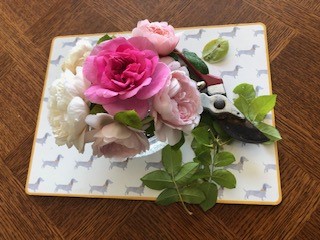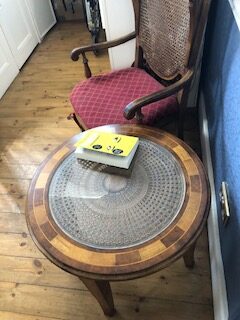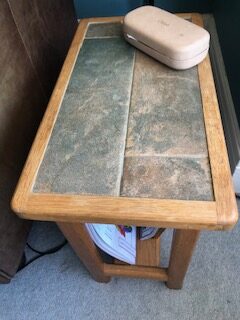Life is wonderfully ironic, is it not? Now that I am finally able to indulge my desires in buying what I like, I am reminded that though I could afford it, the planet cannot. Unfettered consumerism is stripping the Earth of its precious resources, poisoning its air and rivers and filling its land with junk.
Working to heal the Earth is a complicated affair. It is impossible to do everything, but if we can do something, we are making a start. And when it comes to consumer goods, there is an easy solution that is also good for our finances: to buy second-hand goods and reuse them.
Yes, I know – who wants to buy smelly clothes from the charity shop? Who wants to be a ‘second hand rose’? But bear with me. Firstly, charity shops are not the jumble sales of my youth. Some are positively designer. And the taboo on buying something used/old needs to be replaced with a more enlightened view.
Our status should not be based on the number of good things we have, but rather the number of good things we do. If everyone, from the richest to poorest, takes pride in reusing and upcycling, those on more limited incomes need not feel left out.

Unlike my husband, who is a charity shop aficionado, I am fairly new to this form of purchasing. Yet, when I decided that I wanted a crystal rose bowl to display my garden blooms, I knew a charity shop would be just the place. I set my husband the task of finding one (as he is constantly out and about) and a few months later, he returned with this beauty. It cost £5.
Shopping in this way is the exact opposite of the Amazon method. It may take days, weeks or even months to find what you are looking for, but for me that is part of the charm. Hunting down the thing you want is part of the pleasure and finding it a joy far greater than the buzz you get from clicking an icon.
Use your friends
When I decided that a glass topped table would provide the perfect, practical ‘frame’ for the dozens of pressed flowers I’ve made, I considered it best to enlist help. Solid wood tables with glass inserts not being the most common item. I threw the challenge out to my craft group and that afternoon, Penny came by with the perfect specimen.

This table was rather too lovely for me to use for my project, so I’ll use another instead. But now my wicker work chair has a companion.
The sustainable home
While I was at the charity furniture warehouse, I also found a perfect magazine rack/ table that complemented the ones my mother had kindly bought us. Now there is no excuse for magazines to take up so much of the counter space and I’ll know where to find my glasses.

Purchasing pre-loved furniture is always a bargain. It is not simply the lower price tag that ensures this. Traditionally made products in solid, natural materials last much longer that the thinly veneered modern equivalent. Mariia sleeps on Great Granny Mullen’s mahogany bed and one hundred years on it is just as lovely.
Solid woods are also easily repairable. Stains and marks can often be sanded down and re-varnished or you can leave it as a naturally ‘distressed’ piece.
Make it your own
As such furniture is inexpensive, we can be much more bold in how we play with it. My decoupage table in the shed was an experiment that worked. If it failed, I would only have been £6.99 the poorer.
We gave my niece my son’s old pine chest of drawers for her spare room and she sanded it down and painted it a gorgeous pink.
For me, this is the greatest appeal of the second hand – it positively invites creativity. These items have done a life-time of service and been disposed of. We have the opportunity of giving them a second and perhaps more exciting sequel.



When I spotted this gorgeous 1934 edition, I could not resist the nostalgic cover. The stories are hilariously outdated and the pages musty and spotted with age. However, with a little care, it can be brought back as a quirky container or journal. (There are too many options and I haven’t decided yet, but I will include the precious prize label to keep its special history.) Because even as an object loses its value as one thing, it can be transformed into another.
Home economics
Wandering about the warehouse, I was astounded by the sheer variety and quality of the goods on offer. They had everything from lamps to sofas, cutlery to beds. An entire house could be equipped from this one store and cost less than £1000 or the price of a decent new dining room table.
And better still, since the objects were donated, all the profits go to charity. The planet benefits, the cause benefits and most certainly, you do too.
Next week, I’ll explore alternatives to fast fashion. I hope you’ll join me then.

Good blog, Karen! I’ve been a fan of charity shops for many decades and some of my favourite clothes were picked up there. I’m also a regular donor at our local Age UK shop and have a donor number so the donations will qualify for Gift Aid once sold.
That is brilliant, Wendy! Let’s hope that more folks follow your lead! xxx
The circular economy is definitely the way we need to go! There’s so much emphasis on recycling, the reuse bit of the 3Rs gets forgotten!
Absolutely! Reducing and reusing are far more effective!